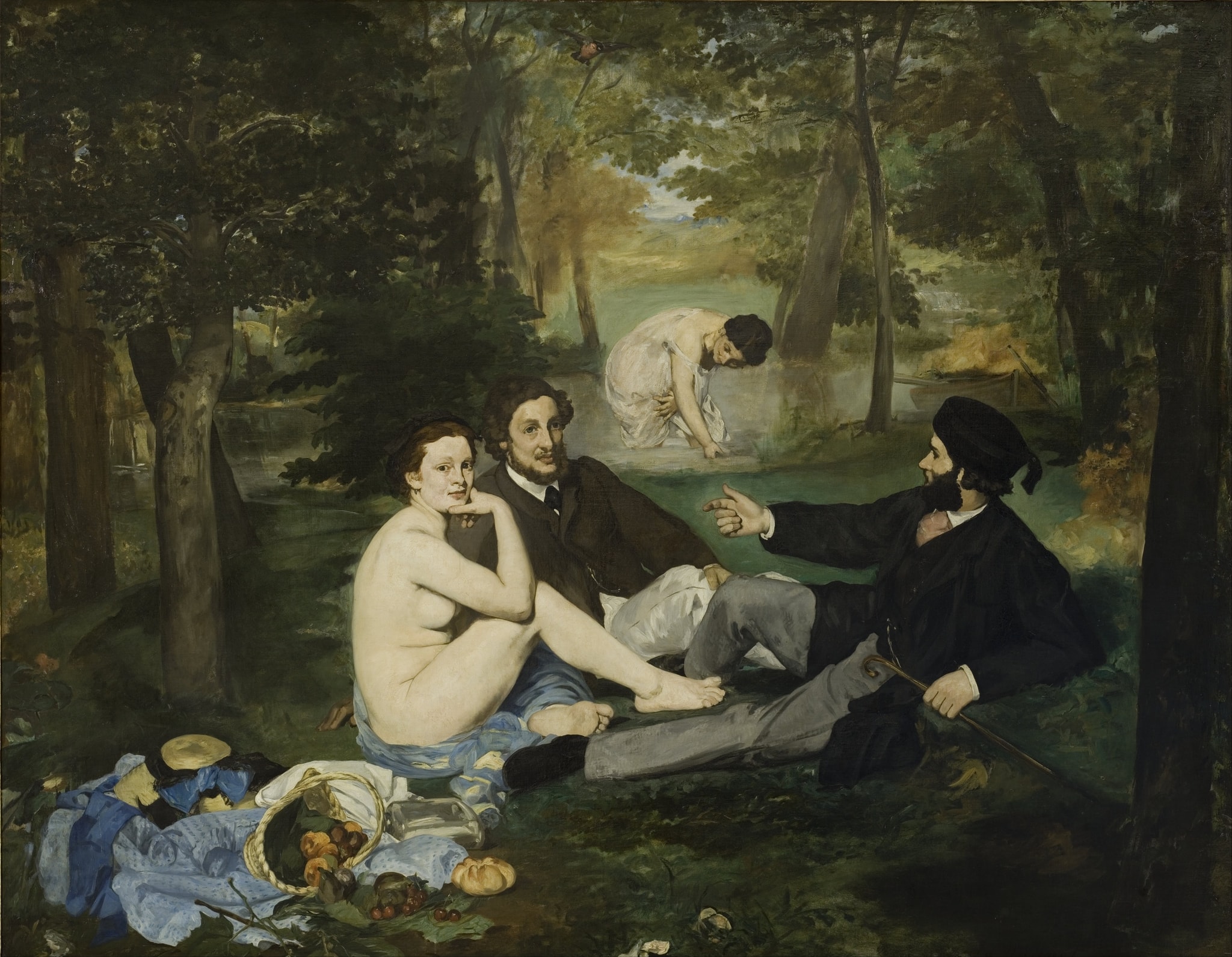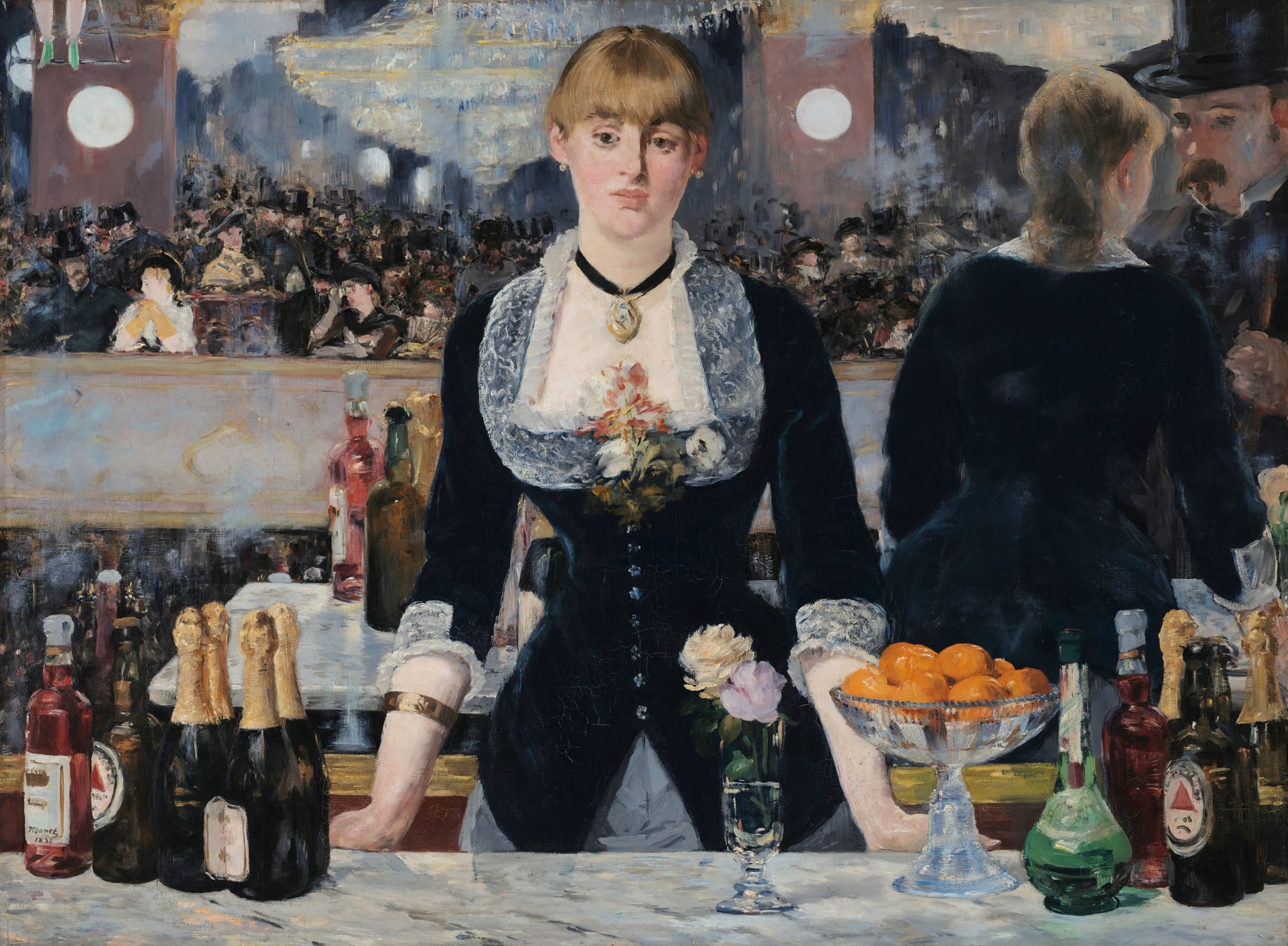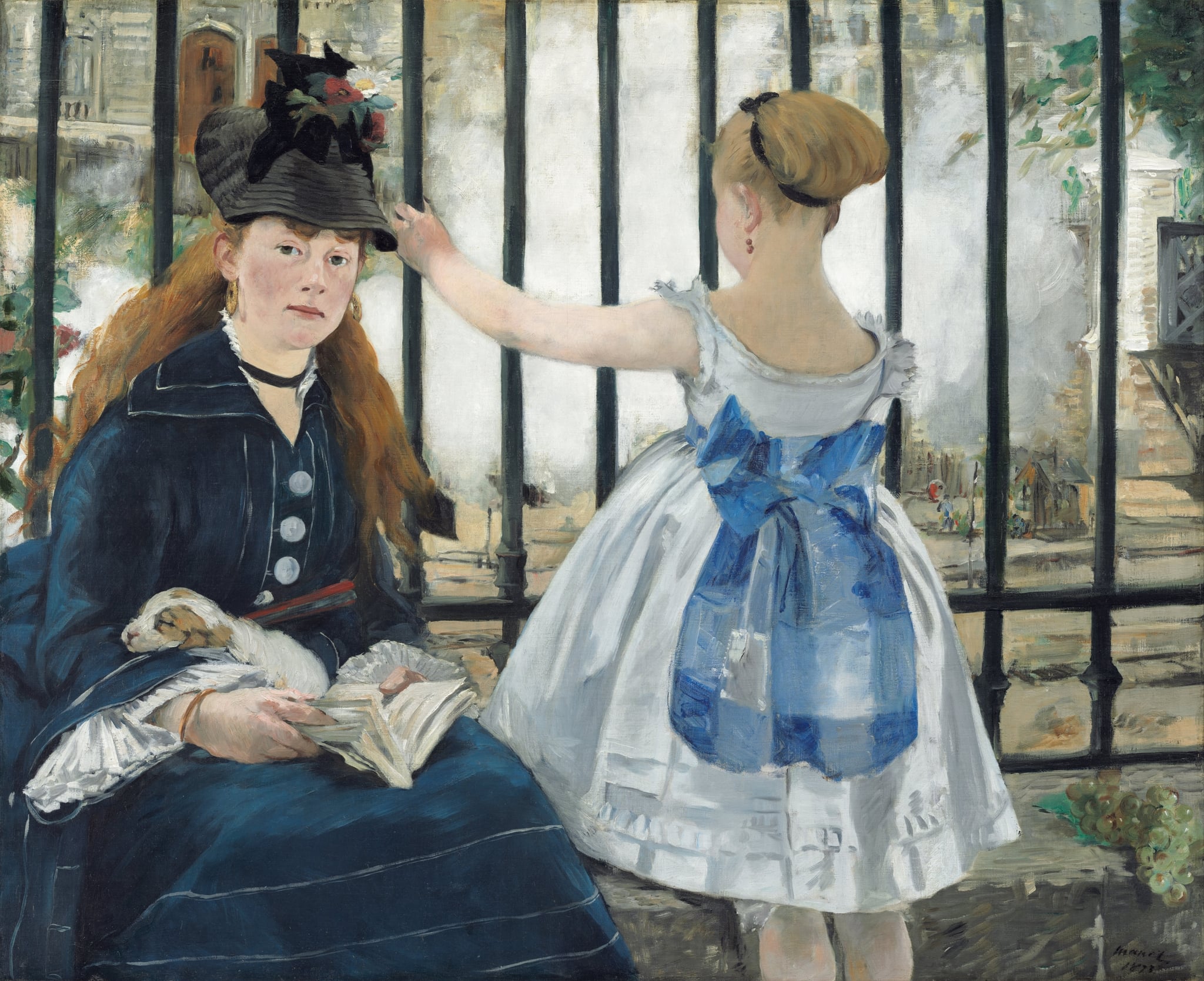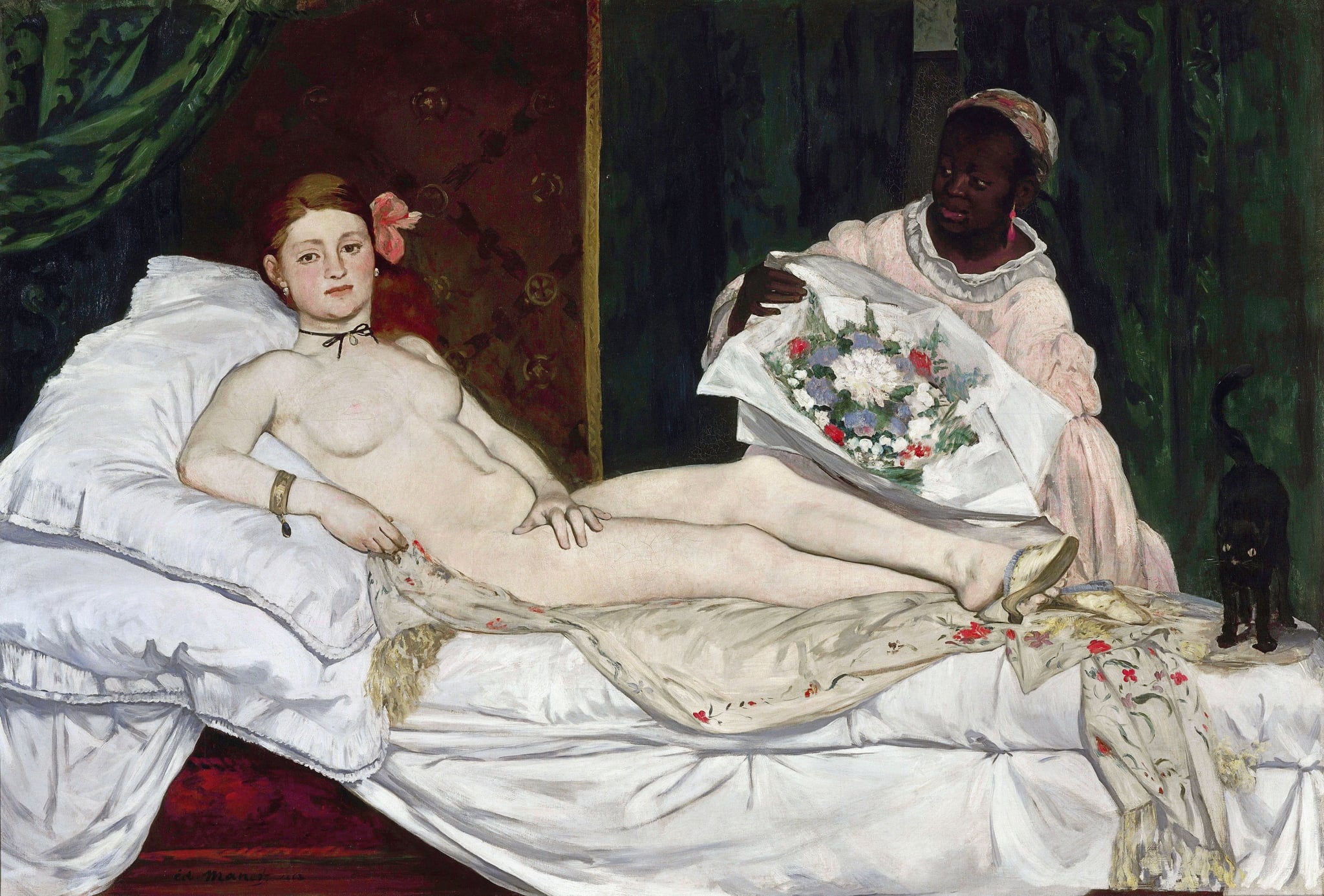Luncheon on the Grass
Fast Facts
- Year
- 1863
- Medium
- Oil on canvas
- Dimensions
- 207 × 265 cm
- Location
- Musée d’Orsay, Paris

Click on any numbered symbol to learn more about its meaning
Meaning & Symbolism
The meaning of Luncheon on the Grass lies in its deliberate collision of everyday contemporaneity with Old Master quotation—a modern scene posed like a Renaissance allegory, then stripped of myth to expose how images construct desire and social power 1. It matters because Manet wields a history‑painting canvas to challenge who and what deserves monumentality, inaugurating a new, self-aware mode of looking that unsettled Salon norms 13. The nude’s direct stare conscripts us into the scene, while the men’s indifference and the tipped basket implicate bourgeois leisure in systems of consumption and the male gaze 2. This calculated artifice—evident in the oversized background bather and planar brushwork—announces modernism’s truth-to-painting over narrative comfort 12.
Manet constructs the central trio as a quotation machine. The two seated men and the nude echo the grouping from Marcantonio Raimondi’s engraving after Raphael’s Judgment of Paris, while the pastoral picnic and bather recall Titian/Giorgione’s Concert champêtre; but where the Renaissance sources justify nudity with myth, Manet substitutes contemporary sitters and daylight, revoking the old alibi 1. On a canvas reserved for heroic history, he installs a picnic: bread and fruit spill from a straw basket; a blue dress and hat lie rumpled at the left; the right-hand man gestures mid-argument with his cane across his knees; the nude folds her limbs and looks out, unflinching. This staging converts citation into critique. The men treat the woman and the food as parallel items in a repertoire of pleasures, while her steady gaze throws the hierarchy back on the viewer, exposing how looking is structured and who gets to look. The background bather—visibly too large for the supposed distance—broadcasts that depth and decorum are constructed fictions; the cool, frontal light chisels the figures as if under studio lamps, draining the scene of pastoral haze to insist on painting’s artifice rather than nature’s continuity 12. This is why Luncheon on the Grass became a scandal and a cornerstone. By importing the everyday into the scale and syntax of the grand manner, Manet demoralizes conventional narrative: there is no myth to redeem the nudity, no clear story to stabilize judgment, only a set of charged relations—gesture, gaze, and goods—laid bare 4. The overturned basket and exposed brioche operate as emblems of appetite placed beside a body that is pointedly “naked” (clothes visible at hand) rather than classically “nude,” collapsing respectability into desire 2. The men’s nonchalance, their averted attention, and the right figure’s didactic pointing reframe the park as a theater of modern social roles, not a timeless Arcadia. Manet’s planar handling and abrupt tonal contrasts flatten the space, while the anomalous scale of the wader and the clipped foreground still life refuse seamless illusion. In substituting quotation for narrative and address for allegory, the painting shifts agency toward the viewer: we complete the scene with our own assumptions, and in so doing confront the operations of modern vision. This is why Luncheon on the Grass is important: it inaugurates a modernism grounded in the visibility of making, the politics of looking, and the audacity to monumentalize the present—an approach that rippled from the Salon des Refusés through later avant-gardes 123.Citations
- Musée d’Orsay, object record for Le Déjeuner sur l’herbe
- Smarthistory, Manet: Le déjeuner sur l’herbe
- The Metropolitan Museum of Art, Heilbrunn Timeline (Rebecca Rabinow), Édouard Manet (1832–1883)
- Paul Hayes Tucker (ed.), Manet’s ‘Le Déjeuner sur l’herbe’ (Cambridge University Press, 1998)
- The Courtauld Gallery, Study for ‘Le Déjeuner sur l’herbe’
- Musée d’Orsay, exhibition: Picasso / Manet: Le déjeuner sur l’herbe
- French Wikipedia summary (interpretive tradition on symbols)
Explore Deeper with AI
Ask questions about Luncheon on the Grass
Popular questions:
Powered by AI • Get instant insights about this artwork
Interpretations
Historical Context
Source: Musée d’Orsay; Anne McCauley in Cambridge University Press volume
Formal Analysis
Source: Musée d’Orsay; Smarthistory
Social Commentary
Source: Smarthistory; John House and contributors in Cambridge University Press volume
Biographical
Source: Musée d’Orsay; The Metropolitan Museum of Art (Heilbrunn Timeline)
Reception History
Source: Musée d’Orsay (object record and Picasso/Manet exhibition); The Metropolitan Museum of Art
Symbolic Reading
Source: Musée d’Orsay; Smarthistory; French scholarly summaries
Related Themes
About Édouard Manet
More by Édouard Manet

A Bar at the Folies-Bergère
Édouard Manet (1882)
Édouard Manet’s A Bar at the Folies-Bergère stages a face-to-face encounter with modern Paris, where <strong>commerce</strong>, <strong>spectacle</strong>, and <strong>alienation</strong> converge. A composed barmaid fronts a marble counter loaded with branded bottles, flowers, and a brimming bowl of oranges, while a disjunctive <strong>mirror</strong> unravels stable viewing and certainty <sup>[1]</sup><sup>[2]</sup>.

The Railway
Édouard Manet (1873)
Manet’s The Railway is a charged tableau of <strong>modern life</strong>: a composed woman confronts us while a child, bright in <strong>white and blue</strong>, peers through the iron fence toward a cloud of <strong>steam</strong>. The image turns a casual pause at the Gare Saint‑Lazare into a meditation on <strong>spectatorship, separation, and change</strong> <sup>[1]</sup><sup>[3]</sup>.

Olympia
Édouard Manet (1863 (Salon 1865))
A defiantly contemporary nude confronts the viewer with a steady gaze and a guarded pose, framed by crisp light and luxury trappings. In Olympia, <strong>Édouard Manet</strong> strips myth from the female nude to expose the <strong>modern economy of desire</strong>, power, and looking <sup>[1]</sup><sup>[3]</sup>.